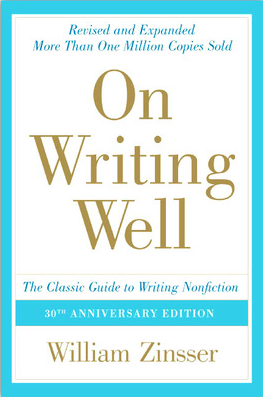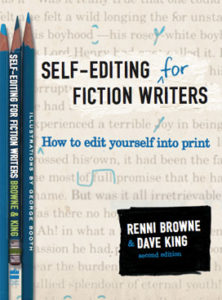
Many of our clients are not professional writers. They are entrepreneurs and leaders in the fields of technology, parenting, politics, business, sports, and science. They’re used to writing reports and other longish documents, but writing a non-fiction book for a general audience requires a different skill set. When these clients ask us for reference books on writing, we highly recommend these two.
On Writing Well: The Classic Guide to Writing Nonfiction
First published in 1976, William Zinsser’s book truly is a classic. He has revised it several times to account for changes in the writing and publishing landscape, such as the more recent growth of memoir writing. Zinsser has written over a dozen books himself and contributes to major magazines. He teaches at the Columbia University Graduate School of Journalism. He knows his stuff, in other words.
On Writing Well is most useful for newer non-fiction writers. It addresses crucial questions such as honing your own style, writing a strong lead, and the danger of fixating on publication while you’re writing. He also includes basic questions of word choice and usage that are addressed in much more detail in other books, such as The Elements of Style. It’s written with a warm, engaging style and is full of examples that help illuminate his concepts. Many of those examples relate to magazine writing but can be applied equally to writing a book.
Zinsser says, “You learn to write by writing.” That is certainly true, and this book can help too.
Self-Editing for Fiction Writers: How to Edit Yourself Into Print
Why would we recommend a book on writing fiction to our non-fiction authors? Very few books exist on revising and editing, and this is one of the best we’ve encountered. The authors are Rennie Browne, a former editor at Scribner’s and William Morrow who turned freelance decades ago, and Dave King, a former contributor to Writer’s Digest who has also been freelance editing for decades.
Browne and King teach writers how to think like an editor when evaluating their own work, so they can write with more polish and sophistication. There are chapters on dialogue, exposition, voice, etc. Each chapter includes significant wisdom on how to approach these elements of writing and brings in several examples from both published books and raw manuscripts. Each chapter also includes hands-on exercises (with answers) and checklists to help you evaluate your own manuscript.
The authors have a sense of humour that makes the book lively and entertaining to read. It’s illustrated by former New Yorker cartoonist George Booth.
Self-Editing for Fiction Writers is most useful for narrative non-fiction writers (memoir, biography, etc.), but any beginning non-fiction writer can draw lessons from it.
Do you need personalized help?
And if you need more help than a book can give you, drop us a line.
We provide a number of editorial services that can help you write and polish your manuscript.





